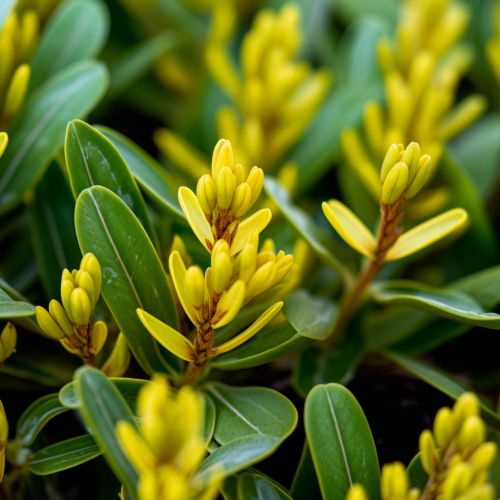Genlisea
Classification and Description
Genlisea, commonly known as corkscrew plants, is a genus of carnivorous plants in the family Lentibulariaceae. The genus comprises approximately 30 species, which are native to Central and South America, Africa, and Madagascar. The plants are characterized by their unique underground leaves that have a corkscrew shape, hence the common name. These specialized leaves are used to trap and digest microscopic organisms, primarily protozoa, which supplement the plants' nutrient intake in their native nutrient-poor environments.
Morphology
Genlisea plants are small, herbaceous perennials that typically grow in wet, sandy soils. The above-ground portion of the plant consists of a rosette of small, linear leaves, which are photosynthetic but not involved in prey capture. The flowers of Genlisea species are zygomorphic, meaning they have bilateral symmetry, and are typically yellow or violet in color. The flowers are borne on erect stalks, or inflorescences, that rise above the leaf rosette.


The most distinctive feature of Genlisea plants, however, is their underground leaves, which form a complex network of spiraling tubes. These tubes, or traps, are lined with inward-pointing hairs that guide prey into the digestive region of the trap. The traps function via a 'suction trap' mechanism, whereby water is rapidly pumped out of the trap, creating a flow of water that sucks prey into the trap.
Ecology and Distribution
Genlisea species are found in a variety of habitats, from wet savannahs to cloud forests, but they are most commonly associated with nutrient-poor, sandy soils. The plants are adapted to these nutrient-poor environments through their ability to capture and digest microscopic organisms, which provide a supplementary source of nutrients, particularly nitrogen.
In terms of geographical distribution, Genlisea species are native to Central and South America, Africa, and Madagascar. The greatest species diversity is found in Brazil, which is home to approximately half of all known Genlisea species.
Carnivory
The carnivorous nature of Genlisea plants was first proposed in the late 19th century, but it was not until the early 21st century that definitive evidence was provided. The plants' underground leaves, or traps, are used to capture and digest microscopic organisms, primarily protozoa. The traps operate via a 'suction trap' mechanism, which is unique among carnivorous plants.
The process of prey capture and digestion in Genlisea involves several stages. First, the prey is guided into the trap by inward-pointing hairs. Water is then rapidly pumped out of the trap, creating a flow of water that sucks the prey into the digestive region of the trap. Here, the prey is digested by enzymes secreted by the plant, and the resulting nutrients are absorbed.
Cultivation
While Genlisea plants are not commonly grown as houseplants, they can be cultivated under the right conditions. The plants require a wet, sandy substrate and high humidity levels. They also require bright light, but not direct sunlight, as this can cause the leaves to burn. Genlisea plants can be propagated by seed or by division of the rosette.
